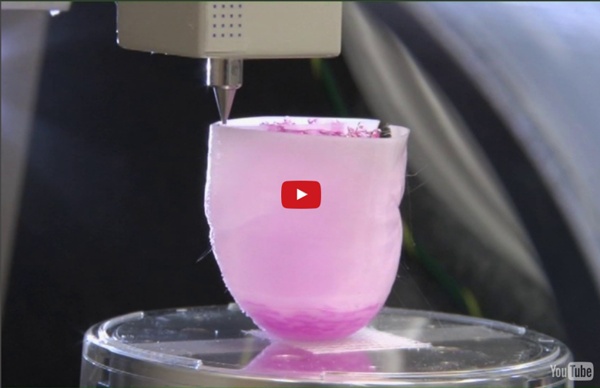



3-D Printing Will Change the World To anyone who hasn’t seen it demonstrated, 3-D printing sounds futuristic—like the meals that materialized in the Jetsons’ oven at the touch of a keypad. But the technology is quite straightforward: It is a small evolutionary step from spraying toner on paper to putting down layers of something more substantial (such as plastic resin) until the layers add up to an object. And yet, by enabling a machine to produce objects of any shape, on the spot and as needed, 3-D printing really is ushering in a new era. As applications of the technology expand and prices drop, the first big implication is that more goods will be manufactured at or close to their point of purchase or consumption. Another implication is that goods will be infinitely more customized, because altering them won’t require retooling, only tweaking the instructions in the software. China won’t be a loser in the new era, but it will have to give up on being the world’s manufacturing powerhouse.
3D printing: A force for revolutionary change 21 May 2013 Last updated at 19:00 ET May the prints be with you: A recent example of a 3D-printed object It was Neil Gershenfeld who introduced me to the potential of additive manufacturing, also known as 3D printing, getting on for 10 years ago, and I got very excited about its possibilities. Professor Gershenfeld has been one of the stars of Massachusetts Institute of Technology MIT for a long time. Under its founder Nicholas Negroponte, the MIT Media Lab was one of the definers of the new digital era: a world where bits and bytes take over from atoms in many familiar activities and where everything that can be digitised will be digitised. “ Start Quote 3D individualises industries which until now have been dominated by mass production” End Quote In 2002 Neil Gershenfeld spun off from the Media Lab something called The Centre for Bits and Atoms. The classes continue: "How to Make (Almost) Anything" and "How to Make Something that Makes (Almost) Anything". Now that's changing. Darker side
Working gun made with 3D printer 6 May 2013Last updated at 06:38 GMT By Rebecca Morelle Science reporter, BBC World Service, Texas The BBC's Rebecca Morelle saw the 3D-printed gun's first test in Austin, Texas The world's first gun made with 3D printer technology has been successfully fired in the US. The controversial group which created the firearm, Defense Distributed, plans to make the blueprints available online. The group has spent a year trying to create the firearm, which was successfully tested on Saturday at a firing range south of Austin, Texas. Anti-gun campaigners have criticised the project. Europe's law enforcement agency said it was monitoring developments. Victoria Baines, from Europol's cybercrime centre, said that at present criminals were more likely to pursue traditional routes to obtain firearms. She added, however: "But as time goes on and as this technology becomes more user friendly and more cost effective, it is possible that some of these risks will emerge." Personal liberties Gun control
What, Exactly, Is a 3-D Printer? The world's first 3-D printable handgun, aka "The Liberator." Photograph from Defense Distributed via European Pressphoto Agency This week a 25-year-old law student at the University of Texas named Cody Wilson made international headlines when he used a 3-D printer to "print out" a functional .38 caliber pistol. He then put design software online so that—in theory, at least—anyone in the world who downloaded the software and had access to a commercial 3-D printer and $60 worth of plastic could make their own handgun. It was a demonstration that not only sparked a lively debate on gun control in the U.S. and abroad, but also threw a spotlight on a vibrant, fast-developing manufacturing technology that could change the shape of the future. So what is a 3-D printer? Invented in the mid-1980s, it is a printer that uses plastic, wax, resin, paper, gold, titanium—a whole host of materials—instead of ink to create a solid, three-dimensional object. What can you make with one? Can I do this at home?